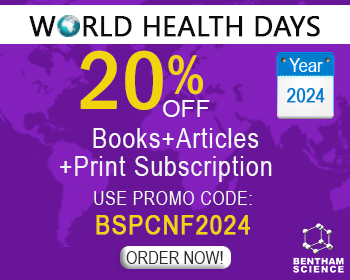Abstract
Background: Cardiovascular diseases (CVDs) are a leading risk factor for mortality worldwide and the number of CVDs victims is predicted to rise through 2030. While several external parameters (genetic, behavioral, environmental and physiological) contribute to cardiovascular morbidity and mortality; intrinsic metabolic and functional determinants such as insulin resistance, hyperglycemia, inflammation, high blood pressure and dyslipidemia are considered to be dominant factors.
Methods: Pubmed searches were performed using different keywords related with mitochondria and cardiovascular disease and risk. In vitro, animal and human results were extracted from the hits obtained.
Results: High cardiac energy demand is sustained by mitochondrial ATP production, and abnormal mitochondrial function has been associated with several lifestyle- and aging-related pathologies in the developed world such as diabetes, non-alcoholic fatty liver disease (NAFLD) and kidney diseases, that in turn can lead to cardiac injury. In order to delay cardiac mitochondrial dysfunction in the context of cardiovascular risk, regular physical activity has been shown to improve mitochondrial parameters and myocardial tolerance to ischemia-reperfusion (IR). Furthermore, pharmacological interventions can prevent the risk of CVDs. Therapeutic agents that can target mitochondria, decreasing ROS production and improve its function have been intensively researched. One example is the mitochondria-targeted antioxidant MitoQ10, which already showed beneficial effects in hypertensive rat models. Carvedilol or antidiabetic drugs also showed protective effects by preventing cardiac mitochondrial oxidative damage.
Conclusion: This review highlights the role of mitochondrial dysfunction in CVDs, also show-casing several approaches that act by improving mitochondrial function in the heart, contributing to decrease some of the risk factors associated with CVDs.
Keywords: Mitochondria, Cardiovascular diseases, metabolism, mitochondrial dysfunction, cardiovascular risk, insulin resistance.
[http://dx.doi.org/10.1016/S0140-6736(05)17741-1] [PMID: 15652604]
[http://dx.doi.org/10.1016/j.jacc.2012.03.074] [PMID: 22858388]
[http://dx.doi.org/10.1161/CIRCULATIONAHA.106.655688] [PMID: 17179034]
[http://dx.doi.org/10.1016/j.amjcard.2009.10.007] [PMID: 20102968]
[http://dx.doi.org/10.1016/j.phrs.2016.09.040] [PMID: 27697647]
[http://dx.doi.org/10.1161/CIRCULATIONAHA.115.008718] [PMID: 27267538]
[http://dx.doi.org/10.1016/S0140-6736(03)13968-2] [PMID: 12892956]
[http://dx.doi.org/10.1016/S0140-6736(13)61752-3] [PMID: 24084292]
[http://dx.doi.org/10.1016/j.atherosclerosis.2015.01.027] [PMID: 25670232]
[http://dx.doi.org/10.1016/j.phrs.2017.03.008] [PMID: 28300617]
[http://dx.doi.org/10.1001/jama.289.1.76] [PMID: 12503980]
[http://dx.doi.org/10.1016/S0140-6736(10)62037-5] [PMID: 21295846]
[http://dx.doi.org/10.2337/diacare.28.7.1769] [PMID: 15983333]
[http://dx.doi.org/10.1136/bmj.f6698] [PMID: 24231028]
[http://dx.doi.org/10.1017/S0007114508145883] [PMID: 19079817]
[http://dx.doi.org/10.1186/s40348-018-0082-5] [PMID: 29560535]
[http://dx.doi.org/10.1136/bmj.g4164] [PMID: 25011450]
[http://dx.doi.org/10.1016/S0140-6736(12)61766-8] [PMID: 23245609]
[http://dx.doi.org/10.1161/CIRCULATIONAHA.110.010710] [PMID: 21810663]
[http://dx.doi.org/10.1161/01.CIR.94.4.857] [PMID: 8772712]
[http://dx.doi.org/10.1093/sleep/29.8.1009] [PMID: 16944668]
[http://dx.doi.org/10.1113/expphysiol.2006.033787] [PMID: 17085678]
[http://dx.doi.org/10.1161/CIR.0b013e3181dbece1] [PMID: 20458016]
[http://dx.doi.org/10.2174/0929867324666170518095736] [PMID: 28521687]
[http://dx.doi.org/10.1016/S0140-6736(14)60616-4] [PMID: 24797573]
[http://dx.doi.org/10.1186/s12933-018-0762-4] [PMID: 30170598]
[http://dx.doi.org/10.2337/diabetes.47.10.1643] [PMID: 9753305]
[http://dx.doi.org/10.1161/01.CIR.93.10.1809] [PMID: 8635260]
[http://dx.doi.org/10.1016/j.ahj.2007.01.008] [PMID: 17383294]
[http://dx.doi.org/10.1371/journal.pone.0052036] [PMID: 23300589]
[http://dx.doi.org/10.2337/dc08-0854] [PMID: 19017770]
[http://dx.doi.org/10.1161/ATVBAHA.111.241885] [PMID: 22815340]
[http://dx.doi.org/10.1038/nrendo.2014.29] [PMID: 24663222]
[http://dx.doi.org/10.1016/j.amjmed.2007.01.003] [PMID: 17320517]
[http://dx.doi.org/10.1111/j.1753-4887.2000.tb01834.x] [PMID: 11140908]
[http://dx.doi.org/10.1002/1520-7560(2000)9999:9999<:AID-DMRR154>3.0.CO;2-N]
[http://dx.doi.org/10.1172/JCI10762] [PMID: 10953019]
[http://dx.doi.org/10.2337/dc07-zb08] [PMID: 17855278]
[http://dx.doi.org/10.1161/ATVBAHA.112.300948] [PMID: 23599442]
[http://dx.doi.org/10.1016/j.cmet.2011.07.015] [PMID: 22055501]
[http://dx.doi.org/10.2337/dc09-S333]
[http://dx.doi.org/10.1002/1873-3468.12297] [PMID: 27403883]
[http://dx.doi.org/10.1073/pnas.97.4.1784] [PMID: 10677535]
[http://dx.doi.org/10.1002/biof.3] [PMID: 19319842]
[http://dx.doi.org/10.2337/diabetes.52.10.2562] [PMID: 14514641]
[http://dx.doi.org/10.1016/S0140-6736(15)60401-9] [PMID: 26312908]
[http://dx.doi.org/10.4239/wjd.v5.i4.444] [PMID: 25126392]
[http://dx.doi.org/10.2174/1871530317666161205124955] [PMID: 27919218]
[http://dx.doi.org/10.1186/s12933-016-0364-y] [PMID: 26983644]
[http://dx.doi.org/10.2337/db12-1648] [PMID: 23704521]
[http://dx.doi.org/10.1016/j.vph.2012.05.005] [PMID: 22609133]
[http://dx.doi.org/10.2174/1381612811319320005] [PMID: 23448484]
[http://dx.doi.org/10.2337/dc11-s207] [PMID: 21525443]
[http://dx.doi.org/10.3390/biom5010194] [PMID: 25786107]
[http://dx.doi.org/10.1161/CIRCRESAHA.109.212217] [PMID: 20299674]
[http://dx.doi.org/10.1210/jcem.86.3.7304] [PMID: 11238470]
[http://dx.doi.org/10.1093/qjmed/hcp065] [PMID: 19498039]
[http://dx.doi.org/10.1161/ATVBAHA.111.241463] [PMID: 22796579]
[http://dx.doi.org/10.1016/S0002-9149(98)00031-9] [PMID: 9526807]
[http://dx.doi.org/10.1007/s11886-002-0112-7] [PMID: 12379171]
[http://dx.doi.org/10.1016/j.bbalip.2009.09.023] [PMID: 19818871]
[PMID: 24611136]
[http://dx.doi.org/10.1016/j.molmet.2013.11.003] [PMID: 24634818]
[http://dx.doi.org/10.1016/j.lfs.2012.10.028] [PMID: 23147391]
[http://dx.doi.org/10.1111/febs.14186] [PMID: 28755482]
[http://dx.doi.org/10.1016/j.molcel.2016.02.019] [PMID: 26942674]
[http://dx.doi.org/10.1016/j.tcb.2017.02.004] [PMID: 28274652]
[http://dx.doi.org/10.1016/j.tibs.2016.01.001] [PMID: 26857402]
[http://dx.doi.org/10.1038/nature12985] [PMID: 24429632]
[http://dx.doi.org/10.1016/j.cmet.2015.02.009] [PMID: 25738459]
[http://dx.doi.org/10.1016/j.tem.2013.01.005] [PMID: 23402768]
[http://dx.doi.org/10.1016/j.semcdb.2017.09.021] [PMID: 28923515]
[http://dx.doi.org/10.1126/science.286.5445.1700] [PMID: 10576729]
[http://dx.doi.org/10.1002/ar.1092380206] [PMID: 8154606]
[http://dx.doi.org/10.1016/0022-2828(92)93381-S] [PMID: 1404407]
[http://dx.doi.org/10.1006/jmcc.2002.2082] [PMID: 12392982]
[http://dx.doi.org/10.1042/bj2800561]
[http://dx.doi.org/10.1161/CIRCRESAHA.113.302095] [PMID: 23948585]
[http://dx.doi.org/10.1152/physrev.00006.2004] [PMID: 15987803]
[http://dx.doi.org/10.1074/jbc.M110.100651] [PMID: 20529848]
[http://dx.doi.org/10.1242/jeb.124594] [PMID: 26792327]
[http://dx.doi.org/10.1016/j.bbabio.2009.05.011] [PMID: 19481532]
[http://dx.doi.org/10.1038/nature10230] [PMID: 21685888]
[http://dx.doi.org/10.1016/0092-8674(95)90430-1] [PMID: 7634331]
[http://dx.doi.org/10.1126/science.280.5370.1763] [PMID: 9624056]
[http://dx.doi.org/10.1038/s41580-018-0052-8] [PMID: 30143745]
[http://dx.doi.org/10.1073/pnas.0908099107] [PMID: 20018762]
[http://dx.doi.org/10.1038/nrcardio.2016.203] [PMID: 28004807]
[http://dx.doi.org/10.1016/j.jacc.2010.09.039] [PMID: 21272750]
[http://dx.doi.org/10.1016/j.jacc.2010.09.040] [PMID: 21272749]
[http://dx.doi.org/10.3390/nu9121323] [PMID: 29206172]
[http://dx.doi.org/10.1007/s40139-017-0133-y] [PMID: 29082112]
[http://dx.doi.org/10.1111/jcmm.12556] [PMID: 25782072]
[http://dx.doi.org/10.1042/BJ20100791] [PMID: 21044047]
[http://dx.doi.org/10.1152/ajpheart.00013.2019] [PMID: 30901280]
[http://dx.doi.org/10.1016/j.cell.2013.05.039] [PMID: 23746838]
[http://dx.doi.org/10.1172/JCI64125] [PMID: 23454757]
[http://dx.doi.org/10.1016/j.bbabio.2015.05.021] [PMID: 26050974]
[http://dx.doi.org/10.1016/j.bbabio.2015.05.022] [PMID: 26050973]
[http://dx.doi.org/10.1093/geronj/11.3.298] [PMID: 13332224]
[http://dx.doi.org/10.1016/j.cell.2005.02.001] [PMID: 15734681]
[http://dx.doi.org/10.3389/fphys.2018.01094] [PMID: 30131726]
[http://dx.doi.org/10.1152/ajpheart.00053.2015] [PMID: 26232232]
[http://dx.doi.org/10.18632/aging.100266] [PMID: 21248376]
[http://dx.doi.org/10.1016/j.ijcard.2016.04.092] [PMID: 27128560]
[http://dx.doi.org/10.1161/ATVBAHA.107.156059] [PMID: 18162611]
[http://dx.doi.org/10.1093/eurheartj/ehv587] [PMID: 26543043]
[http://dx.doi.org/10.1038/46311] [PMID: 10580504]
[http://dx.doi.org/10.1016/j.ijcard.2014.06.025] [PMID: 25012499]
[http://dx.doi.org/10.1161/HYPERTENSIONAHA.113.02129] [PMID: 24842918]
[http://dx.doi.org/10.1093/eurheartj/ehs331] [PMID: 23008506]
[http://dx.doi.org/10.7554/eLife.19264] [PMID: 27863209]
[http://dx.doi.org/10.1016/j.cmet.2014.12.011] [PMID: 25600785]
[http://dx.doi.org/10.1371/journal.pone.0201986] [PMID: 30102730]
[http://dx.doi.org/10.1016/0921-8734(92)90021-G] [PMID: 1383759]
[http://dx.doi.org/10.1006/bbrc.1995.1648] [PMID: 7741744]
[http://dx.doi.org/10.1111/j.1474-9726.2010.00581.x] [PMID: 20456298]
[http://dx.doi.org/10.1136/jmg.31.1.41] [PMID: 8151636]
[http://dx.doi.org/10.1038/s41598-018-30255-6] [PMID: 30089816]
[http://dx.doi.org/10.1093/cvr/cvq239] [PMID: 20639213]
[http://dx.doi.org/10.1016/j.bbamcr.2011.01.014] [PMID: 21256163]
[http://dx.doi.org/10.2337/diabetes.53.9.2366] [PMID: 15331547]
[http://dx.doi.org/10.1210/en.2005-0938] [PMID: 16141388]
[http://dx.doi.org/10.3389/fphys.2018.01054] [PMID: 30258366]
[http://dx.doi.org/10.1074/jbc.M116.753509] [PMID: 28154187]
[http://dx.doi.org/10.1007/s00395-015-0493-6] [PMID: 25962702]
[http://dx.doi.org/10.1038/pr.2015.269] [PMID: 26717002]
[http://dx.doi.org/10.1073/pnas.0609656104] [PMID: 17360381]
[http://dx.doi.org/10.1210/jc.2004-1283] [PMID: 15562031]
[http://dx.doi.org/10.1186/s12944-018-0872-8] [PMID: 30301464]
[http://dx.doi.org/10.1007/s00395-018-0707-9] [PMID: 30374710]
[http://dx.doi.org/10.1016/j.lfs.2015.09.018] [PMID: 26407476]
[http://dx.doi.org/10.1016/j.yjmcc.2012.02.009] [PMID: 22406429]
[http://dx.doi.org/10.1016/j.mito.2010.07.005] [PMID: 20654738]
[http://dx.doi.org/10.1161/CIRCRESAHA.118.310082] [PMID: 29748369]
[http://dx.doi.org/10.1016/0092-8674(89)90505-9] [PMID: 2673540]
[PMID: 1371447]
[http://dx.doi.org/10.1097/01.LAB.0000027921.01548.C5] [PMID: 12218084]
[http://dx.doi.org/10.1016/j.cmet.2007.10.013] [PMID: 18177724]
[http://dx.doi.org/10.1016/j.bbalip.2009.09.014] [PMID: 19782765]
[http://dx.doi.org/10.2337/db08-0079] [PMID: 18678617]
[http://dx.doi.org/10.2337/db09-0259] [PMID: 19542201]
[http://dx.doi.org/10.1172/JCI4431] [PMID: 9884331]
[http://dx.doi.org/10.1152/ajpheart.00452.2009] [PMID: 19801494]
[http://dx.doi.org/10.2337/db12-0927] [PMID: 23349479]
[PMID: 3086934]
[http://dx.doi.org/10.3109/10408363.2011.596521]
[http://dx.doi.org/10.3748/wjg.v22.i16.4079] [PMID: 27122660]
[http://dx.doi.org/10.1056/NEJMra0912063] [PMID: 20879883]
[http://dx.doi.org/10.1136/gutjnl-2017-313884] [PMID: 28314735]
[http://dx.doi.org/10.1016/j.jhep.2016.05.013] [PMID: 27212244]
[http://dx.doi.org/10.1016/0002-9149(89)90537-7] [PMID: 2756882]
[http://dx.doi.org/10.1155/2012/387626] [PMID: 22745910]
[http://dx.doi.org/10.1016/j.biocel.2017.12.019] [PMID: 29288054]
[http://dx.doi.org/10.1016/j.bcp.2018.11.020] [PMID: 30508523]
[http://dx.doi.org/10.1016/j.mito.2005.10.004] [PMID: 16406828]
[http://dx.doi.org/10.1172/JCI82204] [PMID: 26571396]
[http://dx.doi.org/10.1093/cvr/cvn074] [PMID: 18343896]
[http://dx.doi.org/10.1016/j.jacl.2016.09.007] [PMID: 27919360]
[http://dx.doi.org/10.2147/TCRM.S168345] [PMID: 30197519]
[http://dx.doi.org/10.1016/j.bbrc.2018.08.113] [PMID: 30170731]
[http://dx.doi.org/10.1002/jcb.27068] [PMID: 30171706]
[http://dx.doi.org/10.1038/s41598-018-36914-y] [PMID: 30679580]
[http://dx.doi.org/10.1161/JAHA.117.007931] [PMID: 29728014]
[http://dx.doi.org/10.1016/j.yjmcc.2008.01.008] [PMID: 18328500]
[http://dx.doi.org/10.1007/s11897-008-0013-1] [PMID: 18765077]
[PMID: 23981628]
[http://dx.doi.org/10.1053/jhep.2002.32028] [PMID: 11915020]
[http://dx.doi.org/10.1159/000184880] [PMID: 3340265]
[http://dx.doi.org/10.1093/eurheartj/ehp507] [PMID: 20037146]
[http://dx.doi.org/10.4330/wjc.v3.i1.1] [PMID: 21286212]
[http://dx.doi.org/10.1016/j.ihj.2017.01.005] [PMID: 28460776]
[http://dx.doi.org/10.1371/journal.pone.0198196] [PMID: 29889834]
[http://dx.doi.org/10.1161/JAHA.115.003118] [PMID: 27247333]
[http://dx.doi.org/10.1016/j.bbadis.2018.08.025] [PMID: 30837070]
[http://dx.doi.org/10.1681/ASN.2014080750] [PMID: 25644112]
[http://dx.doi.org/10.1371/journal.pmed.1001335] [PMID: 23139642]
[http://dx.doi.org/10.1016/j.jacc.2014.03.062] [PMID: 25236519]
[http://dx.doi.org/10.1371/journal.pone.0071417] [PMID: 23951157]
[http://dx.doi.org/10.1016/j.jacc.2014.04.058] [PMID: 25082581]
[http://dx.doi.org/10.1016/S0140-6736(12)60898-8] [PMID: 22818941]
[http://dx.doi.org/10.2174/1573403X113099990033] [PMID: 23909636]
[http://dx.doi.org/10.1146/annurev.ph.52.030190.002415] [PMID: 2184765]
[http://dx.doi.org/10.1056/NEJMra071667] [PMID: 17855673]
[http://dx.doi.org/10.1161/01.CIR.74.5.1124] [PMID: 3769170]
[PMID: 1415606]
[http://dx.doi.org/10.1016/S0735-1097(02)02001-6] [PMID: 12204517]
[http://dx.doi.org/10.1097/00005768-199704000-00013] [PMID: 9107634]
[http://dx.doi.org/10.1152/ajpheart.01211.2009] [PMID: 20435852]
[http://dx.doi.org/10.1016/j.atherosclerosis.2011.07.099] [PMID: 21840524]
[http://dx.doi.org/10.1152/ajpregu.00466.2016] [PMID: 28298332]
[http://dx.doi.org/10.1371/journal.pone.0052764] [PMID: 23300764]
[http://dx.doi.org/10.1161/CIRCULATIONAHA.117.028274] [PMID: 28860122]
[http://dx.doi.org/10.1152/ajpheart.01278.2008] [PMID: 19429812]
[http://dx.doi.org/10.1096/fj.07-102541] [PMID: 18417547]
[http://dx.doi.org/10.1016/j.exger.2005.03.010] [PMID: 15919594]
[http://dx.doi.org/10.3109/10715762.2013.825371] [PMID: 23915097]
[http://dx.doi.org/10.1016/j.freeradbiomed.2004.07.025] [PMID: 15454275]
[http://dx.doi.org/10.1152/ajpheart.01249.2004] [PMID: 15792986]
[http://dx.doi.org/10.1161/01.CIR.96.12.4343] [PMID: 9416902]
[http://dx.doi.org/10.1016/j.exger.2006.05.008] [PMID: 16822632]
[http://dx.doi.org/10.1089/ars.2007.1959] [PMID: 18331202]
[http://dx.doi.org/10.1161/01.CIR.0000074229.93804.5C] [PMID: 12810615]
[http://dx.doi.org/10.1096/fj.05-5189fje] [PMID: 16891621]
[http://dx.doi.org/10.1073/pnas.0405432101] [PMID: 15545607]
[http://dx.doi.org/10.1073/pnas.1514250112] [PMID: 26668395]
[http://dx.doi.org/10.1056/NEJM199312023292302] [PMID: 8232457]
[http://dx.doi.org/10.2165/11317870-000000000-00000] [PMID: 19827860]
[http://dx.doi.org/10.21037/atm.2018.06.21] [PMID: 30069458]
[http://dx.doi.org/10.1016/j.jacc.2012.08.1021] [PMID: 23219298]
[http://dx.doi.org/10.2174/15748901113089990018] [PMID: 23952809]
[http://dx.doi.org/10.2174/157016112798829788] [PMID: 22112355]
[http://dx.doi.org/10.1016/j.pharmthera.2013.07.011] [PMID: 23911986]
[http://dx.doi.org/10.1016/j.freeradbiomed.2014.02.017] [PMID: 24583459]
[http://dx.doi.org/10.2741/4231]
[http://dx.doi.org/10.1016/j.mito.2007.03.002] [PMID: 17482884]
[http://dx.doi.org/10.1016/j.mito.2007.02.005] [PMID: 17485243]
[http://dx.doi.org/10.1046/j.1432-1327.1999.00543.x] [PMID: 10469134]
[http://dx.doi.org/10.1096/fj.05-3718com] [PMID: 15985532]
[http://dx.doi.org/10.1097/HJH.0000000000000054] [PMID: 24309493]
[http://dx.doi.org/10.1016/j.redox.2012.11.009] [PMID: 23667828]
[http://dx.doi.org/10.1016/j.cmet.2011.02.003] [PMID: 21356523]
[http://dx.doi.org/10.1073/pnas.0601945103] [PMID: 17015830]
[http://dx.doi.org/10.1016/j.freeradbiomed.2012.05.033] [PMID: 22659314]
[http://dx.doi.org/10.1073/pnas.0903250106] [PMID: 19528654]
[http://dx.doi.org/10.1007/BF02627957] [PMID: 8877076]
[http://dx.doi.org/10.1111/j.1527-3466.2001.tb00061.x] [PMID: 11484068]
[http://dx.doi.org/10.2174/138161211796904812] [PMID: 21718248]
[http://dx.doi.org/10.1385/CT:4:1:11] [PMID: 15034201]
[http://dx.doi.org/10.1385/CT:1:3:205] [PMID: 12213973]
[http://dx.doi.org/10.1016/S0014-2999(01)00745-2] [PMID: 11166286]
[http://dx.doi.org/10.1016/j.taap.2004.04.005] [PMID: 15476868]
[http://dx.doi.org/10.1016/j.bbabio.2007.01.023] [PMID: 17346667]
[http://dx.doi.org/10.1097/FJC.0b013e31821cd83c] [PMID: 21558884]
[http://dx.doi.org/10.1590/1516-3180.20151332T1] [PMID: 26018887]
[http://dx.doi.org/10.1016/S0022-2828(95)91551-6] [PMID: 8576937]
[http://dx.doi.org/10.1152/ajpregu.00615.2005] [PMID: 16410402]
[http://dx.doi.org/10.2174/1381612823666171009141201]
[http://dx.doi.org/10.1016/j.atherosclerosis.2013.01.015] [PMID: 23433403]
[http://dx.doi.org/10.1016/j.repc.2015.09.006] [PMID: 26763895]
[http://dx.doi.org/10.1177/0960327111429141] [PMID: 22144727]
[http://dx.doi.org/10.1016/j.ijcard.2009.11.038] [PMID: 20034685]
[http://dx.doi.org/10.1152/ajpgi.00329.2014] [PMID: 26045616]
[http://dx.doi.org/10.1002/dmrr.249] [PMID: 11921433]
[http://dx.doi.org/10.1111/j.1476-5381.2012.01825.x] [PMID: 22220498]
[http://dx.doi.org/10.1111/bph.12461] [PMID: 24117165]
[http://dx.doi.org/10.1161/CIRCHEARTFAILURE.115.002206] [PMID: 26839394]
[http://dx.doi.org/10.1161/CIRCHEARTFAILURE.117.004389] [PMID: 29217757]
[http://dx.doi.org/10.1016/j.jacc.2004.07.038] [PMID: 15489104]



























